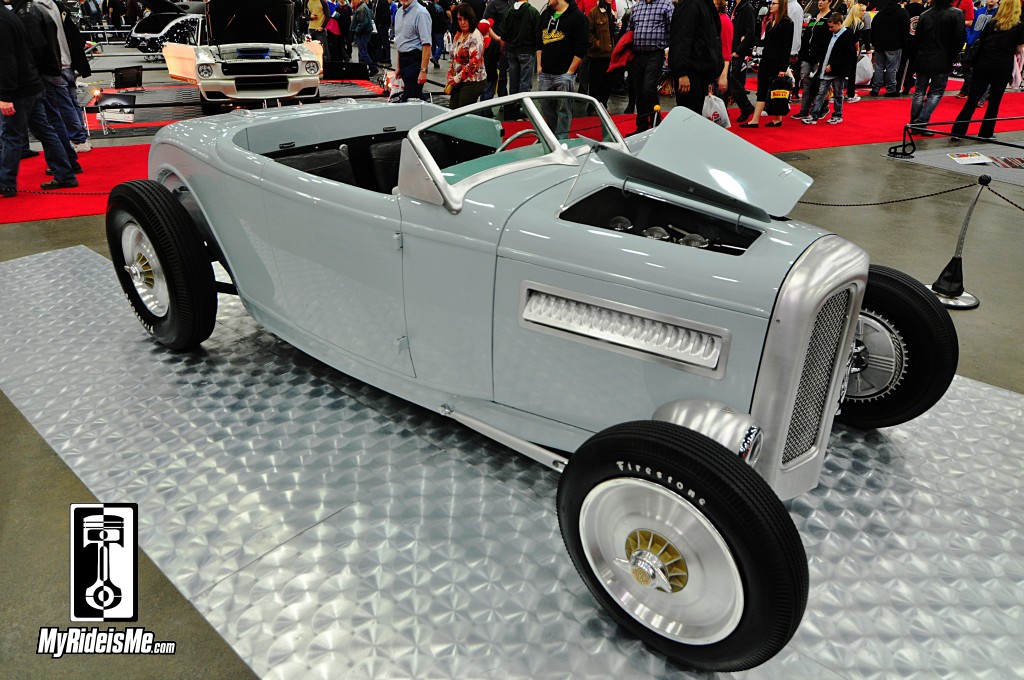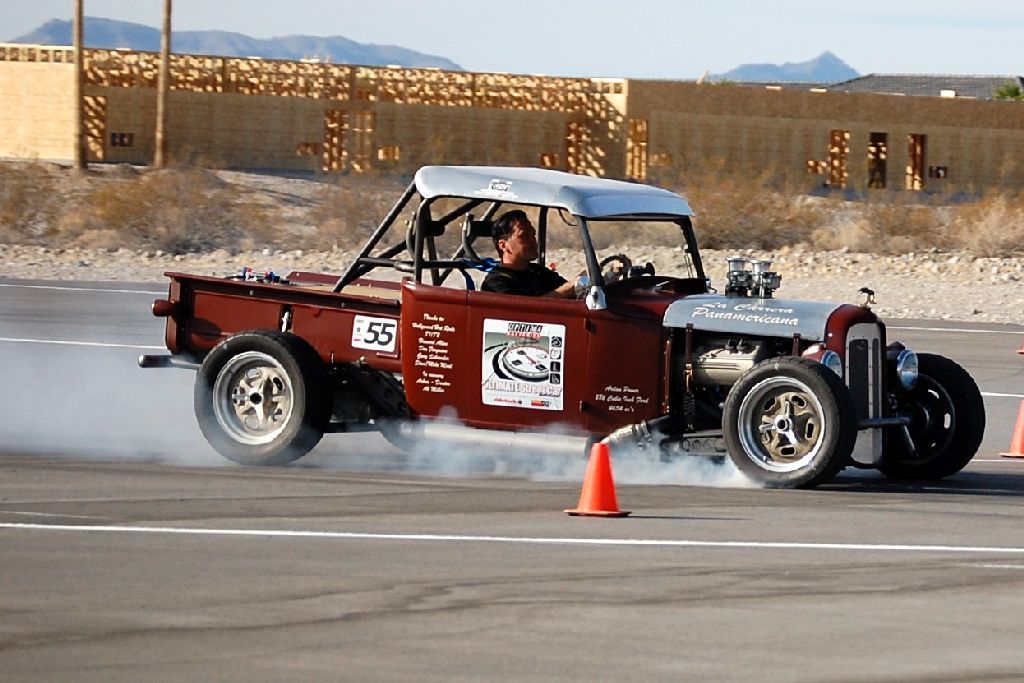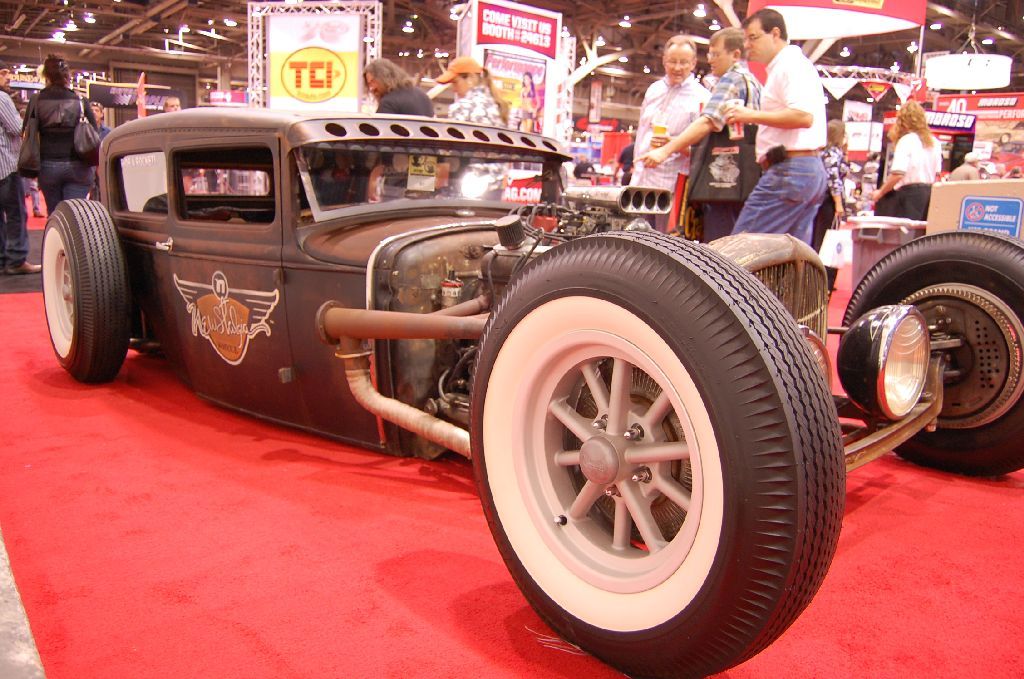Name That Roadster! Or Highboy? Or Phaeton?
What is a Highboy Hot Rod or Highboy Roadster?
As I journey along in the car world, little by little I’m learning. From mechanical issues to car culture history to just plain cars. Recently, while at the LA Roadster Show, I was able to learn a little about all three! It all started with the question “What makes a roadster a roadster?”
To help me answer that question I enrolled Lynn Houchin, longtime LA Roadster Club Member, to be my guide. He answered all of my questions (and was able to point out examples!) about important distinctions surrounding roadsters including the big questions:
- What is a Model A?
- What is a Model T?
- What is a Highboy?
- What is a coupe, phaeton, tudor, and more!
Read on to get schooled!
First things first – What defines a roadster?
Sure, I know its got something to do with having a removable top… but that same definition would also define a convertible so there must be more to it than that. So here it is, two simple things. A roadster must have removable windshield posts, one that is not one with the body – and no roll-up door windows. Now that mystery is solved, let’s move onto the next.
Model A and Model T, what’s the difference?
Hearing car guys talk about this I’d always been confused thinking it was a model type. As it ends up, Ford only made one model of car (albeit with different variations) during these years. So Model T is the earlier Ford car made between the years of 1908 and 1927. A perfect example of a highly modified “Model T” would be our very own Pikesan’s 1927 “Bonnie” . In 1928 Ford switched things up a bit adding a splash apron, widening the fenders some, and changing the body style in places. The “Model A” was then produced between 1928 and 1931, and can be seen in the picture above.
In 1932 Ford switched things up again!
This time it’s a little easier to notice – they added a radiator cover. 1932’s often get called “deuces” but you could also call them Model Bs (for some reason though I’ve never heard car guys use that term.) 1933s and 1934s are recognizable by their pointed grills – and a 1933 has curved louvers on the hood sides whereas a 1934 has a straight louvers. So the above picture is what year? That’s right, a 1934. At the LA Roadster show, you can get your roadster in up to the year 1936.
But enough of these nitty-gritty distinctions. Now that you’re on your way to being a schooled car buff, let’s learn some more vocab!
Highboy. A roadster with the fenders removed. (Fender = those curvy things that go over the wheels.)
How about a Roadster Pickup?
True roadster trucks are rare, but they were made. On top is a beauty done by Hollywood Hot Rods. I first saw it in October at Ultimate Street Challenge and it also made an appearance at LA Roadster Show… but it’s much funner to see it in action! Below that, I couldn’t help but add this cute aqua and black roadster truck sighted at the LA Roadster Show, I want a ride!
So What is Channeling at Hot Rod?
Channelling: Lowering the body over the chassis instead of on top of them. Most rat rod roadsters are channeled. This one was on display at SEMA this past November.
The following terms are NOT referring to roadsters. But they’re applicable to these years of cars – and sometimes, people apply them to roadsters improperly!
What is a Coupe? Tudor? Sedan?
Coupe: A 2-door single-seat hardtop with windows. There are both 3-window and 5-window coupes. The 3-window also has suicide doors. (Suicide Door= a door that hinges at back instead of towards the front)
Tudor: A coupe with a back seat.
Sedan: A 4-door hardtop with a back seat.
What is a Cabriolet?
Cabriolet: Fixed-post windshield (its connected to the body), soft-top, can have roll-up windows, 2-door, single seat.
And the final question: Does it have to be a Ford?
No! While the majority of roadsters you’ll see are Fords, it can be something different. Remember, to be considered a roadster a car must have:
- Removable windshield post
- Have no door windows or roll-up windows
With nearly 800 roadsters present at the LA Roadster show, I had plenty of opportunity to practice my new naming skills! Next time you see one of these beauties on the road (or looking through the MyRideisMe.com LA Roadster Show gallery) see if you can properly name it…you’ll be on the way to being bonafide!
Want more learning opportunities? Check out Pikesan’s article on 13 of the Best Hot Rod Engines or the learning page at GreaseGirl.com!











I always learn something when you write a story!! Thanks Greasegirl
Cool. What is the difference between a highboy and lowboy. They both have removed fenders right? I thought a lowboy was the frame rails were inside the body? Or is a lowboy a roadster with fenders installed?
Nice writeup GreaseGirl.
Good stuff. A “Highboy” has the frame sitting up on top of the rails, like most of the photos above. A “Lowboy” has the frame lowered down over the frame (channeling), to give it that low sinister look, like the picture of the Rat Rod at the Sema show above.
One more VERY important distinction – Hot Rods have flathead v-8s or period Chevy 6s with a split manifold. Street rods have more modern OHV v-8 engines.
You need some schoolin………the 4th pic in the list is NOT a 32 Ford, rather it’s a 28-29 on ’32’ rails with a ’32’ grill shell.In fact it is the same year as the 2nd pic.
Thanks Terry, fixed it…
i thought 32 fords were also model As!!?
Nope! 32’s are 32’s…
Good article enjoyed and learned a cupola things.I think The phaeton has four seats, not four doors. Also known as a ‘tub’